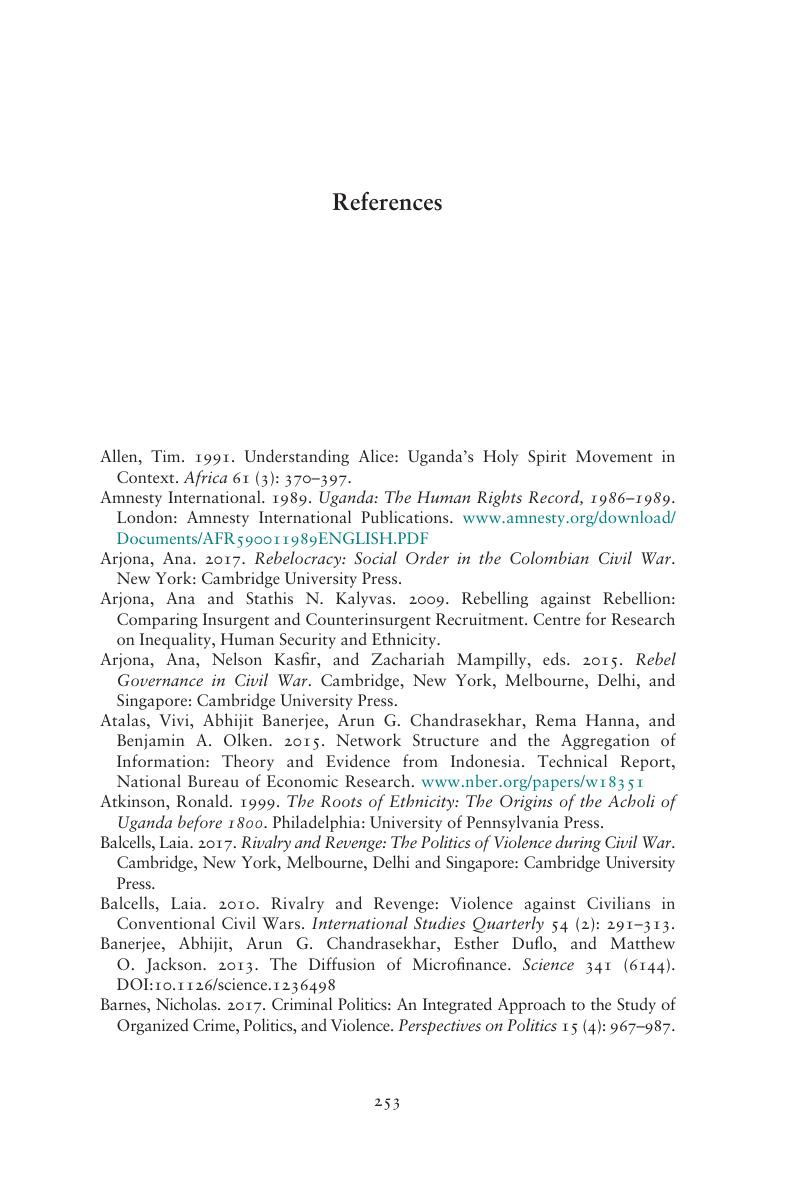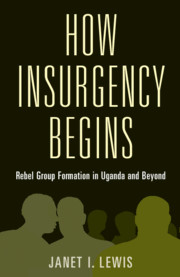References
Published online by Cambridge University Press: 18 September 2020
Summary

- Type
- Chapter
- Information
- How Insurgency BeginsRebel Group Formation in Uganda and Beyond, pp. 253 - 267Publisher: Cambridge University PressPrint publication year: 2020



